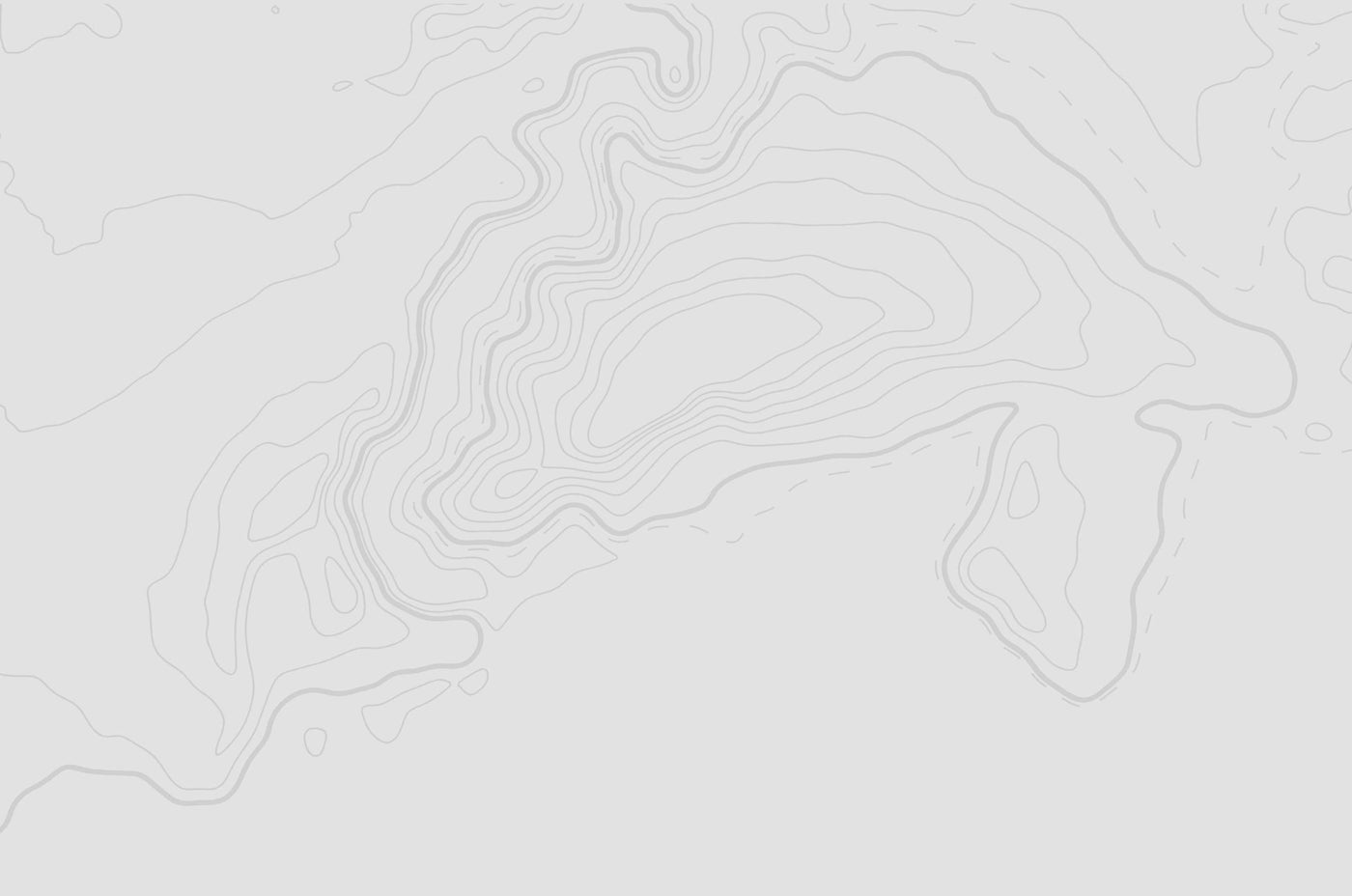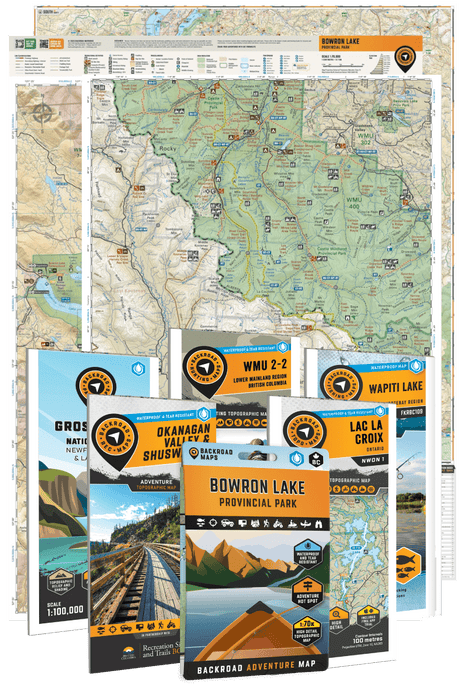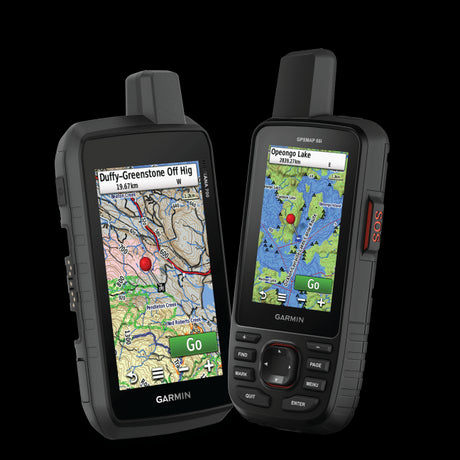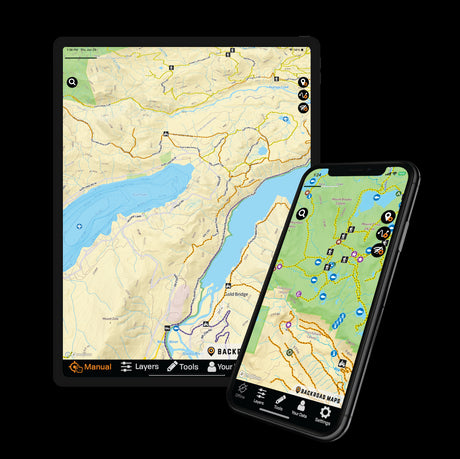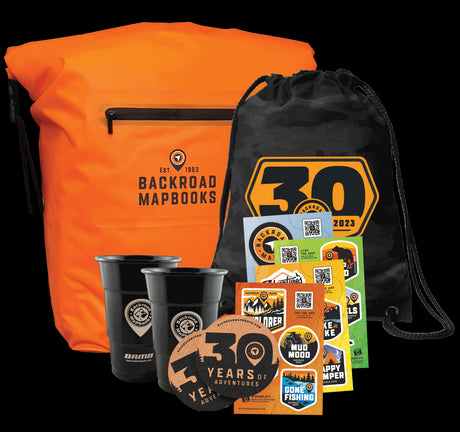The Lower Mainland, which sits in the southwest corner of British Columbia, offers a diverse geographical landscape. Heading out from the heavily populated Vancouver area, explorers will find fertile farmland through the Fraser Valley, rugged rocky coasts and ocean inlets, sandy beaches, towering mountains and more! And of course, plenty of great lakes and streams, some remote, some right off the highway, for anglers to nab a trophy fish. There are plenty of options, with stocked lakes perfect for beginner anglers, to fly fishing pools in fast moving streams or spectacular scenic destinations for those willing to make the drive. Here are a few of our favorite lakes and streams found within Region 2, the Lower Mainland, an area contained in the tourism Vancouver, Coast and Mountains area of the province. Within this diverse area, you will find everything from fishing holes for beginners to locations perfect for the seasoned angler.

Alice Lake
Alice Lake is a popular destination with a picnic site, campground, fishing wharf and two sandy beaches. The lake is stocked with a small number of catchable sized rainbow in time for the family fishing weekend in the spring and also holds dolly varden and cutthroat trout. The fish, particularly the rainbow, remain small (a 30 cm/12 in fish would be a good-sized catch). Since the lake warms in the summer, fishing is best left for the spring or fall during which time casting a fly, bait fishing or trolling a small lure are all good choices. A trail circles the lake, allowing access to shore fishing and the man-made wharf at the east end is a good spot to cast from. This pothole lake is deepest in the middle with fairly murky water but no powerboats are allowed. Anglers working the small inflow creeks near the drop-off on the south side often meet with good success.

Capilano River
The Capilano is the most popular fishing river on the North Shore of Vancouver. Hundreds of anglers gather here during the prime fishing months. The river has a small summer and winter (December to April) steelhead run. Along with the steelhead, anglers will find chinook, chum, coho and pink salmon. The best place to fish is at the river mouth in Ambleside Park, which is one of the most productive places in the Lower Mainland for coho. Fishing here during low tide is much more effective, as is using a pair of waders to get out onto the shallow tidal flat. Two other good angling locations are Cabin Pool, near the hatchery, and just below the Trans-Canada Highway. Most of the fishable stretches on the river have nice gravel bars that you can fish from but fishing the shallower whitewater sections can be more effective than fishing the pools.

Cheakamus Lake
Cheakamus Lake is a stunning mountain lake that is worth fishing simply for the scenery as the turquoise-coloured lake is surrounded by rugged snow-capped peaks and tall pine trees. Adding to the appeal is the fact that the lake is only accessible by a 3 km trail, leading to 10 backcountry campsites and a small wharf. Cheakamus holds good numbers of rainbow in the 20-30 cm (8-12 in) range and the odd dolly varden that grows to 4 lbs (2 kg). The lake is very deep, the water drops off rapidly from forested shore which limits fly-fishing or spincasting. Anglers will need to bring a float tube or canoe which only adds to the difficult access. Found at a relatively high elevation, the season starts a little later here. By mid-May/early June the lake is ready to be fished, and it remains cool through summer until the snow starts to fly in early November.
Chilliwack/Vedder Rivers
The Chilliwack River becomes the Vedder River below the Vedder Bridge, as it slowly flows into the Vedder Canal. Covering a total fishing length of about 36 km all the way to Slesse Creek, this section of the river is the most popular stream to fish in the Fraser Valley, if not the province. The area around the bridge is the most popular spot and it is not uncommon to see hundreds of anglers lined up shoulder-to-shoulder trying for the winter steelhead, chum and coho in September to October as well as chinook in July through September. The chinook, chum and coho are stocked with steelhead being stocked two-three times a year.

Como Lake
Easy access, two fishing docks and stocked (usually seven or eight times per year) with 6,000 spring and fall catchable sized trout make this a great place for kids to learn about fishing. Although quite shallow, the lake has broad, open shores that are easy to fish from. The best time to fish is right after the lake is stocked, as the fish will take almost anything you throw at them. In addition to catching rainbow, people still occasionally pull out cutthroat trout, brook trout, brown catfish and carp. While it is possible to get out onto the water using a float tube, most people do not bother as shore fishing is easy with the Lakeside Loop Trail providing great access.

Francis Lake
Francis Lake is one of several lakes found to the west of Harrison Lake off of the Sts’ailes (former Harrison West) Forest Service Road, home to a small recreation site and best accessed by four-wheel drive. It is one of just a handful of lakes in the region stocked with all female triploid Blackwater rainbow, with trout here averaging 30 cm (12 inches), best caught by fly-fishing or spincasting. Shore fishing is somewhat limited because there are expansive shoals surrounding the east and south ends of the lake. If you are restricted to fishing from shore, it is best to hike around to the southwest corner of the lake and cast from there. Since powerboats are banned, a float tube or similar will allow you to work the two deep pockets, one towards the southwest and one near the northwest end of the lake in the summer months after the water begins to warm. Earlier and later in the year there are ample shoals and shore cover that are great for insect rearing.
Fraser River
The Fraser River, between Coquitlam and American Creek, offers excellent fishing for salmon and sturgeon. Most of the fishing occurs off one of the many gravel bars that line the river and having a boat to access the quieter bars for salmon and the back eddies for sturgeon is helpful. Perhaps the busiest time on the river is during the sockeye run from mid-July to late September, but the chinook fishery beginning in June and lasting until October is also popular. Coho enter the river in late September and run until December. Chum are caught in October and pink in August and September. Sea-run cutthroat are caught throughout the fall until early spring, and steelhead from November to March. Most active in late August, the largest populations of sturgeon are found between Agassiz and Maple Ridge. Catch and release only, these prehistoric looking beasts can exceed 450 kg (1,000 lbs) and a guide is highly recommended.

Green Timbers Lake
Found in the heart of Surrey off of 96th Avenue in Green Timbers Urban Forest, most people would be shocked to know that this small lake produces some trophy trout. Rumours are that a 4.5 kg (10 lb) rainbow was caught here. Green Timbers Lake is stocked multiple times annually with up to 7,500 spring and fall catchable sized rainbow trout and is only accessible on foot. The fishing is often fast and furious shortly after stocking and the fish are fairly indiscriminate about what they eat. The lake is very small, and swimming, boating and float tubes are not allowed. (“The lake is reserved for ducks and other waterfowl,” says the Green Timbers website.) Therefore, shore fishing is the only way to fish the lake. There is a small pier that can be fished from, but it can be extremely busy. The northern and southern ends are the deepest portions of the lake, and this is where the fishing is best.
Harrison Lake
Harrison is the biggest lake in southwestern BC, seeming more like an ocean fjord at times with its stunning scenery and rugged shoreline. The lake is over 55 km (34 mi) long and about 1.5 km (0.9 mi) wide. It is also very deep, up to 200 metres (650 ft). There are plenty of big cutthroat, which can reach 40 cm (16 in), dolly varden, rainbow, kokanee and whitefish in the lake, but with 28,000 hectares to hide out in, they can be elusive. Because the lake is so low in elevation, it can be fished year-round, even in the dead of winter. Salmon spawn in rivers and creeks around the lake and many eggs wash back down into the lake attracting the trout. In summer, the cutthroat feed on stickleback, which congregate around underwater points, sunken trees, pilings and anything that offers a little bit of cover. There are numerous drive-in and boat-in recreation sites around the lake. Be sure to check the numerous regulations for size limits and speed restrictions.

Lafarge Lake
Also known as the Coquitlam Pit, this former gravel pit has been dammed to create an urban fishing hole and picnic site. The small, low elevation lake is located between Pinetree Way and Pipeline Road in Port Coquitlam. The lake contains rainbow (the odd one up to 35 cm/14 in) and carp. The lake is intensively stocked multiple times through the spring and fall with catchable-sized rainbow. For this reason, the best fishing months are March to June and September to December, right after stocking. As the fish are indiscriminate, a hook and bobber work as well here as fly-fishing matching the current hatch. Great places to fish from are the accessible fishing dock or along the western shore. With no vegetation or trees, shore access is easy as the bottom drops off quickly and a trail encircles the entire lake. A float tube works quite well too.

Lost Lake
Despite the name, Lost Lake is easy to find at the north end of Whistler. The lake is stocked annually with 1,000 catchable trout that can reach 30 cm (12 in). Since freshly stocked, catchable-sized trout are notoriously easy to catch, the lake makes a great place to introduce beginners to fishing. There are bull trout in the lake as well. While there are some opportunities for shore fishing on this small lake, including the large t-shaped swimming dock and a couple of rustic docks off the trail leading around the lake, most anglers use canoes, pontoon boats or float tubes. Concentrate your efforts along the south, west and east shorelines, in small bays and around the docks and drop-offs. The lake is also quite productive during the winter as well.

Mike Lake
Mike Lake is a good little fishing hole in Golden Ears Provincial Park. It is a shallow, intimate waterbody surrounded by marshy wetlands and situated in a heavily timbered bowl on Maple Ridge. The lake is stocked a couple of times in the spring and again in the fall with over 1,600 catchable-sized rainbow and also holds wild cutthroat that can grow up to 30 cm (12 in). It is a challenge to launch a small cartopper due to mud you could sink up to your knees in, BC Parks has added a T-shaped fishing dock, making it easier to not only launch, but shore fish. The lake can be really busy at times, with dozens of float tubes out on the water and people fighting for space on the dock. However, it is a great escape for those who want to go fishing for a few hours after work.

Mosquito Lake
Located just east of Ivey Lake near Pemberton, Mosquito Lake features a nice picnic area with two small fishing docks/wharves. The small lake is one of only a few in the region stocked with all female triploid Blackwater rainbow trout that are rumoured to grow up to 60 cm (25 in). There are also resident cutthroat but the fishing is usually slow. Because of past rumours of the lake being overfished, the lake sees little pressure. This makes for some good fishing off the docks or along the shoreline where you can find a break in the weeds and fallen logs to cast out into open water. Of course, a small boat gives more options to find the holding areas. Good structure can be found in the western and eastern ends. Fishing is best in late spring to early summer and again in the fall. The lake is a short drive from Pemberton but you will want a four-wheel drive vehicle to access it.

Rice Lake
The man-made Rice Lake is located in the Seymour Demonstration Forest in North Vancouver. It is a small, picturesque waterbody maintained as a family fishing lake and perfect for young children and people with disabilities to learn how to fish. Surrounded by nature, it is easy to forget you are but a stone’s throw from a large metropolitan area. The lake is stocked multiple times a year with up to 9,500 spring or fall catchable-sized rainbow trout. A wheelchair accessible floating dock can be found at the southeast corner of the lake and eager anglers can head here or stake out a spot along the shore as any type of boat, including belly boats, are not allowed. During the spring and fall, water temperatures allow for fishing all day. During summer months when the lake gets quite warm, try fishing in the mornings or evenings when the fish are most active
Sasamat Lake
Sasamat Lake is located within Belcarra Regional Park off Bedwell Bay Road. While it is better known for its great beach and picnic facilities than its fishing, it is a pretty spot and, while the cutthroat and stocked rainbow trout do not get very big, they are plentiful and easy to catch. Over 2,700 spring and 1,000 fall catchable rainbow are added annually. This makes this lake a great place to teach kids how to fish, as you do not need special gear to find the fish. The floating bridge at the south end of the lake is the most popular fishing spot, but if it is too crowded, you can usually find a patch of shoreline open enough to cast from. The western shoreline drops off faster than the east, offering the better fishing. The lake does get fairly deep and if you want to fish the deepest holes, you will need a canoe or float tube. From May to September, only electric motors are allowed on the lake.

Tenquille Lake
Tenquille Lake is a beautiful waterbody set in a sub-alpine meadow surrounded by rugged mountain peaks. But its beauty comes at a price at this popular lake: a long, grueling 6 km (3.7 mi) approach to the lake. Producing well for rainbow in the 20-30 cm (8-12 in) range, this small lake sits in a sub-alpine bowl, which limits the fishing season. Typically ice-free by late June, it stays cool through summer until late October. The lake has two deep pockets of water: one near its west end and one near the east end but few people are willing to carry a float tube to the lake. Fortunately, there are plenty of open areas around the shore, making this a perfect lake for fly casters but approach the shore slowly as the fish are leery of motion on the edge of the lake. Bring plenty of insect repellant as the fish are not the only thing biting here.

Whonnock Lake
Whonnock Lake is an urban lake located northwest of Mission off of 276th Street. It is a marshy lake that is very shallow and has notably dark but clean water which hold cutthroat, crappies, carp and stocked rainbow, with 1,400 catchable sized trout added annually. The trout are aggressive biters and will chase most anything you toss at them, making this a great lake to take kids or new anglers for the first time. The marshy shoreline makes shore fishing very difficult, so bring a canoe or float tube (no powerboats). If you do not have access to the water, the best shore fishing is at the north end but a fishing dock can also be found at the east of the beach.

This is just a small sampling of the vast amount of lakes found throughout the Lower Mainland Region 2. Ready to head out and explore some of these great lakes? Pick up a copy of the Vancouver, Coast & Mountains Backroad Mapbook, the newly updated BRMB Maps app & web map and our much revamped new Lower Mainland Fishing Mapbook. This fishing mapbook offers lake details, fishing tips, stocking information, directions and facilities information for all the best lakes within the region helping anglers find their perfect fishing destination.

